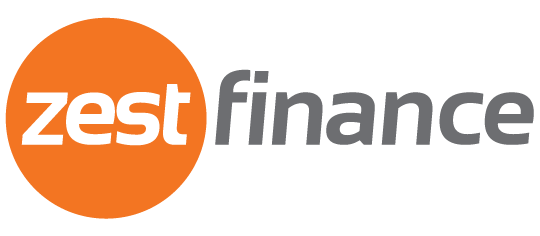ZestFinance: Interview With Douglas Merrill, Founder & CEO

We had the opportunity to interview Douglas Merrill, the founder and CEO of ZestFinance. He started ZestFinance in 2009 with a team of [mostly] ex-Google folks who came together with a mission: "to make fair and transparent credit available to everyone." It is a tech platform that applies "Google-like math" to credit decisions.

Douglas Merrill, Founder & CEO of ZestFinance
Q: Can you tell us a bit about yourself and ZestFinance?
A: I earned my a Ph.D. from Princeton before going on to join Charles Schwab as a Senior VP and then Google (GOOGL), in 2003. I spent 5 years at Google as its CIO and VP of Engineering. I founded ZestFinance in 2009 with the mission to make fair and transparent credit available to everyone. At Google, we built an infrastructure to handle search errors, misspellings, and missing data, but still return highly predictive rankings. I took that same Google-style math and applied it to underwriting. Search and underwriting are both math problems. At ZestFinance, we apply data science and machine learning to help lenders effectively predict credit risk so they can increase revenues, reduce risk and ensure compliance.
Q: How did you get the idea of ZestFinance?
A: After 5 years at Google, I began looking for a new problem to solve that was both technically challenging and socially important. At Google we developed math that used thousands of pieces of information to rank web pages. I began to wonder, “why isn’t credit using these modern technological breakthroughs? It should be.” I found that traditional methods of credit appraisal do a very poor job assessing the creditworthiness of thin-file and hard-to-score customers in the U.S. and around the world. For example, if a recent college graduate doesn’t have any credit history, it can prevent them from financing their first major purchases or getting their first credit cards. I built a platform that uses Google-like math to ingest massive amounts of data, mine it for signals of creditworthiness and generate highly predictive assessments of a borrower's ability and willingness to repay debts.
Q: How will ZestFinance improve the lives of its users?
A: There are millions -- if not billions -- of consumers who go overlooked by financial institutions because they are considered thin-file or no-file borrowers. This is especially true with millennials in the U.S., and in emerging markets such as China, India and Latin America where systems for conducting credit appraisal are immature or non-existent. Traditional underwriting works well when evaluating borrowers with long credit histories, but when there is limited, missing or erroneous data, it has a harder time differentiating between creditworthy and high-risk applicants. Machine learning tools, like ZestFinance, fills those gaps by analyzing a vastly broader set of data to make sure accurate decisions about a potential borrower.
Q: You have mentioned that ZestFinance is growing rapidly, why do you think ZestFinance can grow so fast in this highly competitive industry? And what kind of difficulties are you facing?
A: ZestFinance is one of the only machine learning platforms built exclusively for credit underwriting. For all of the successful applications of artificial intelligence, the technology has been notably absent from many segments of the financial services industry especially consumer lending. In part, that’s because machine learning algorithms have historically been “black boxes” whose inner workings could not be explained as required by fair lending laws. ZestFinance is poised for rapid growth because of our unique ability not only to make sense of large amounts of data and address specific underwriting challenges but also because of our platform’s ability to explain modeling results to ensure compliance with regulatory requirements.
Q: I know ZestFinance has recently launched Zest Automated Machine Learning (ZAML™). Can you tell us a bit about ZAML?
.jpg)
A: ZAML is a machine learning platform developed to enable lenders to analyze vast amounts of non-traditional data to increase approval rates and reduce the risk of credit decisions, particularly for thin-file and no-file borrowers like millennials. The platform also provides the ability to explain the reasoning of machine learning models to measure business impact and comply with regulatory requirements.
Q: What kind of algorithm does ZAML use? How can you get the result so efficiently while accurately?
A: We used the technology we’ve built over the last eight years to develop ZAML. The platform uses machine learning to analyze tens of thousands of data points to provide a richer, more accurate understanding of all potential borrowers. No one algorithm is a silver bullet -- there is a huge universe of algorithms, and each one is good at different kinds of things. ZAML leverages many various kinds of algorithms in order to “ensemble” them into a solution for consumers, which in this case, is a more accurate description of their credit status. The outputs of even the best algorithms will suffer if the data used as inputs is messy, missing or contains errors. Our platform not only imputes missing data but also cleans up and fixes messy pieces of data.
Q: Many millennials have no credit history, so they are denied credit because they cannot be underwritten by traditional systems. How does ZAML solve this problem?
A: Because they may be in school or just starting a job, millennials are often written off by lenders due to their lack of financial history, but in reality, they will likely end up being prime borrowers and good credit risks. Where traditional credit scores today are based off of less than 50 data points, ZAML analyzes tens of thousands of data points including non-traditional pieces of information, such as how much research a person does on a loan or how a person fills out an online form, to paint a clearer picture of a potential borrower’s credit risk.
Q: You’ve partnered with China’s largest online direct-sales company, JD.com and Baidu, the leading Chinese language Internet search provider in China. How do you manage to secure such partnerships/agreements? Are you looking for any additional partners in the future?
A: We are excited to be working with both companies and see huge potential in applying our technology in China and in other emerging credit markets around the world. We work with Baidu to turn Baidu’s search, location, and payment data into credit scores. With JD.com, we convert JD.com’s shopping data into credit data to expand access to Chinese consumers.
Chinese Internet giants have unique digital foundations and large user bases that they can leverage to build consumer finance businesses. However, to accelerate their entry into lending, they need tools and strategic partners who have expertise in machine learning-powered underwriting technology.
ZestFinance has been working on big data credit scoring for several years, and in particular, we’re known in the marketplace for our ability to underwrite using large, messy and error-ridden data sets. We were extremely fortunate that when Baidu and JD.com decided to enter the lending space, they sought us out. In the last few years, our platform served to accelerate their entry into consumer lending and helped both companies avoid beginner’s mistakes. The same platform that helped Baidu and JD.com is now available for use by any lender in any market with our ZAML product. We look forward to applying our expertise to new underwriting problems with new partners in new markets.
Q: It seems like the expansion to China is essential to your growth plan. Is that true? Where do you see your company in five years?
A: China’s certainly an important market for ZestFinance. Only about 20% of the Chinese population has any known credit history, so there’s massive opportunity to create a whole new credit ecosystem. Lenders are increasingly adopting techniques to build a new credit infrastructure based on non-traditional data variables. ZestFinance will continue to be part of that effort, with current and new partners. But the opportunity is for every lender in every market that needs to transition from traditional underwriting to machine learning powered underwriting. Those can be developed markets like the U.S, Europe and South Korea, where existing methods of credit appraisal don’t do a good job of scoring thin-file / no-file applicants, or developing markets, like China, India, Brazil, Turkey, where underwriting systems are still immature. Ultimately, to be competitive and agile, financial institutions of all stripes will need to adopt machine learning and advanced analytics. We’re still in the early stages of that ballgame.
Q: Are you looking for additional funding via a traditional capital raise and/or crowdfunding? If so, how can interested readers learn more?
A: We are focused on serving our customers and partners and are well funded for growth.
Q: Is there anything else you want to share with our audience?
A: We’ve just scratched the surface of what machine learning can do for financial services. The “black box” problem of not being able to explain the inner workings of algorithms has historically slowed the adoption of machine learning in consumer finance, but we are solving that problem with our ZAML platform and specifically with the explainability tools that are part of the platform. Providing the ability to understand a model's reasoning and economic value lets business owners make credit decisions with confidence while ensuring compliance with regulations on disparate impact and adverse action. ZestFinance is helping bring machine learning to consumer lending and creating new customers and entirely new markets in the process.



